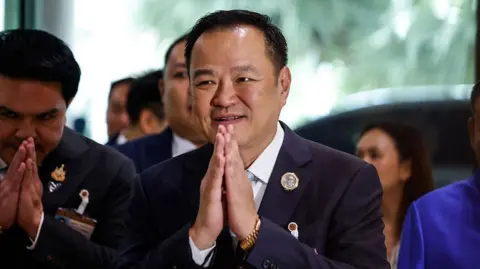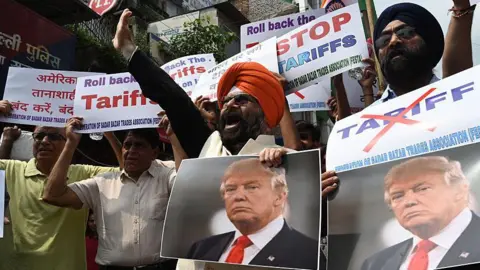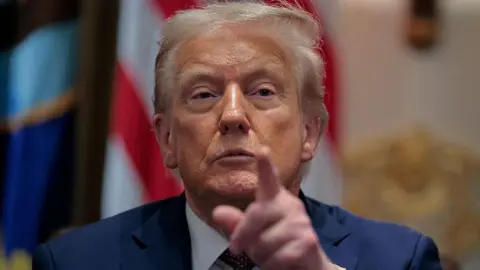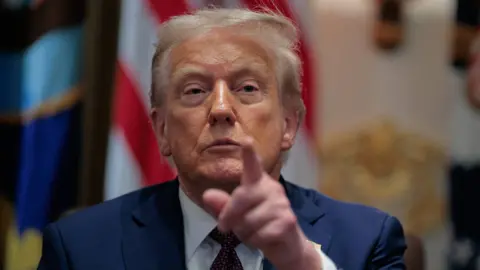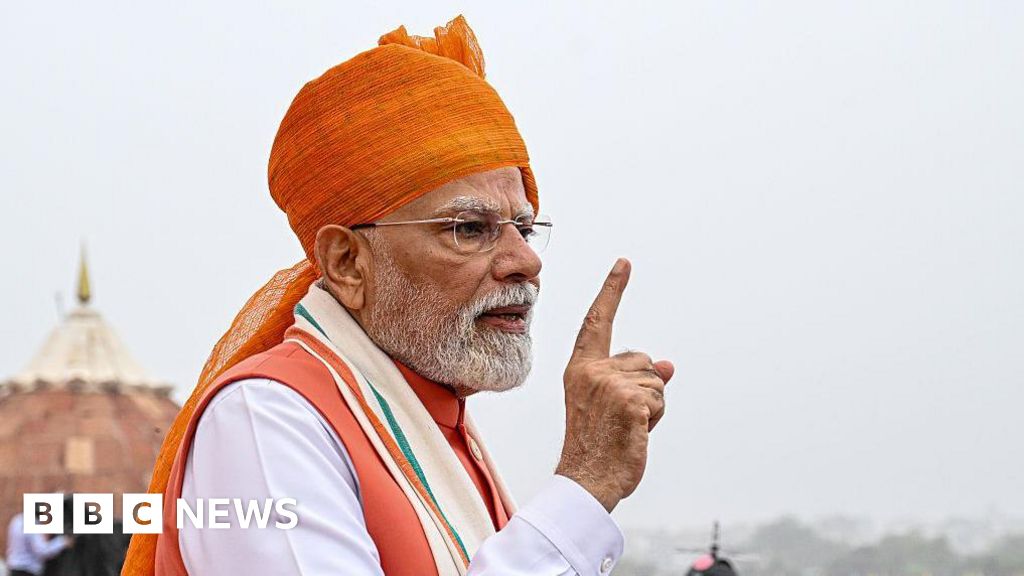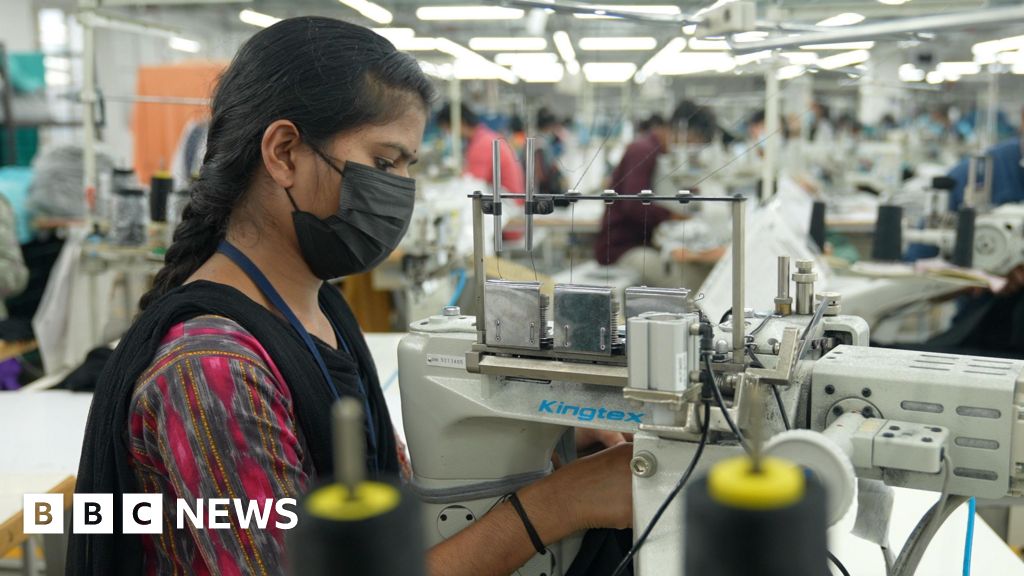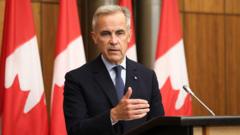Article Text:
The recent implementation of sweeping tariffs by US President Donald Trump has significantly impacted Southeast Asian economies, with Vietnam and Cambodia at the forefront of this economic challenge. These tariffs, which reach as high as 49% for Cambodia and 46% for Vietnam, are a harsh blow to regions that have built their economic foundations on robust export activities.
Southeast Asia has historically depended on exports, especially to the US, which accounts for about 23% of Vietnam's GDP and a staggering 67% for Cambodia. This strong reliance forms the backbone of both nations' ambitions for continued economic success; however, with Trump’s tariffs in place, that progress is now under threat.
Vietnam’s approach, marked by “bamboo diplomacy,” seeks to strike a balance in its ties with both China and the US, but these new economic pressures are testing this strategy. The leadership under To Lam aims for Vietnam to become an upper-income, knowledge-based economy by 2045, setting GDP growth targets above 8%. A crucial part of this vision involved increasing exports to the US, prompting Vietnam to elevate its relationship with the US to a Comprehensive Strategic Partnership in 2023. However, this growing economic aggression from the US threatens its established growth objectives.
Conversely, Thailand, which relies less on US exports—under 10% of its GDP—faces its own difficulty as it grapples with economic stagnation after years of underperformance. The Thai government is weighing various strategies to stimulate growth but is further burdened by Trump's policies.
For Cambodia, the tariffs signify the greatest political peril. Prime Minister Hun Manet’s government, which has shown a similarly authoritarian stance as its predecessor, is particularly vulnerable as it tries to hold onto power amidst rising economic challenges. The garment sector alone, which supports 750,000 jobs, is now at risk of significant downsizing, as the country can ill-afford to lose income streams for its poorest citizens.
In response to the tariff pressures, Southeast Asian nations have opted for a strategy of diplomacy rather than retaliation. Vietnam’s deputy prime minister is scheduled to plead the country's case directly in Washington, offering to eliminate tariffs on US imports, while Thailand’s finance minister aims for similar negotiations. Malaysia’s Prime Minister is also set to engage, albeit from a position less impacted due to lower export dependence.
Despite these diplomatic efforts, Trump’s administration may be hesitant to compromise. Senior trade advisor Peter Navarro dismissed Vietnam's offer as inadequate, criticizing the structure of trade between the US and Vietnam as skewed, with accusations that many Vietnamese exports are merely trans-shipped items from China to avoid tariffs.
Moreover, global stock markets have already reacted negatively, reflecting the uncertainty stemming from these tariffs. In a perplexing turn, Trump—who has been viewed favorably in Vietnam and Cambodia for his assertive foreign policy—now finds the region scrambling to manage the fallout from his trade decisions.
As nations like Cambodia seek to negotiate tariff relief, challenges continue to mount, showcasing the fraught interdependencies in today's globalized economy. With influential exports to the US dwindling, the future looks increasingly precarious for Southeast Asia’s economies.
The recent implementation of sweeping tariffs by US President Donald Trump has significantly impacted Southeast Asian economies, with Vietnam and Cambodia at the forefront of this economic challenge. These tariffs, which reach as high as 49% for Cambodia and 46% for Vietnam, are a harsh blow to regions that have built their economic foundations on robust export activities.
Southeast Asia has historically depended on exports, especially to the US, which accounts for about 23% of Vietnam's GDP and a staggering 67% for Cambodia. This strong reliance forms the backbone of both nations' ambitions for continued economic success; however, with Trump’s tariffs in place, that progress is now under threat.
Vietnam’s approach, marked by “bamboo diplomacy,” seeks to strike a balance in its ties with both China and the US, but these new economic pressures are testing this strategy. The leadership under To Lam aims for Vietnam to become an upper-income, knowledge-based economy by 2045, setting GDP growth targets above 8%. A crucial part of this vision involved increasing exports to the US, prompting Vietnam to elevate its relationship with the US to a Comprehensive Strategic Partnership in 2023. However, this growing economic aggression from the US threatens its established growth objectives.
Conversely, Thailand, which relies less on US exports—under 10% of its GDP—faces its own difficulty as it grapples with economic stagnation after years of underperformance. The Thai government is weighing various strategies to stimulate growth but is further burdened by Trump's policies.
For Cambodia, the tariffs signify the greatest political peril. Prime Minister Hun Manet’s government, which has shown a similarly authoritarian stance as its predecessor, is particularly vulnerable as it tries to hold onto power amidst rising economic challenges. The garment sector alone, which supports 750,000 jobs, is now at risk of significant downsizing, as the country can ill-afford to lose income streams for its poorest citizens.
In response to the tariff pressures, Southeast Asian nations have opted for a strategy of diplomacy rather than retaliation. Vietnam’s deputy prime minister is scheduled to plead the country's case directly in Washington, offering to eliminate tariffs on US imports, while Thailand’s finance minister aims for similar negotiations. Malaysia’s Prime Minister is also set to engage, albeit from a position less impacted due to lower export dependence.
Despite these diplomatic efforts, Trump’s administration may be hesitant to compromise. Senior trade advisor Peter Navarro dismissed Vietnam's offer as inadequate, criticizing the structure of trade between the US and Vietnam as skewed, with accusations that many Vietnamese exports are merely trans-shipped items from China to avoid tariffs.
Moreover, global stock markets have already reacted negatively, reflecting the uncertainty stemming from these tariffs. In a perplexing turn, Trump—who has been viewed favorably in Vietnam and Cambodia for his assertive foreign policy—now finds the region scrambling to manage the fallout from his trade decisions.
As nations like Cambodia seek to negotiate tariff relief, challenges continue to mount, showcasing the fraught interdependencies in today's globalized economy. With influential exports to the US dwindling, the future looks increasingly precarious for Southeast Asia’s economies.





